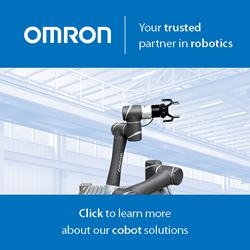5 Amazing Benefits of Combining AR, VR and Robotics

Augmented robots and VR-controlled robots are changing the robotics industry in big ways. Combining AR, VR and robotics allows engineers to push the boundaries of science and technology, as well as medicine and exploration.
There are many ways of combining these three technologies, but a handful of applications stand out today. They reveal some key benefits of AR, VR and robots working together.
1. Training for People and Robots
AR, VR and robotics are useful technologies for training on their own. Combining them allows education in all kinds of fields to become more intuitive, immersive and safe. AR and VR can even help train robots themselves. There are numerous ways engineers and organizations worldwide are implementing these technologies together.
For example, VR has long been eyed as the perfect military training tool. People could learn in an immersive, hands-on setting without the danger of causing or receiving actual harm. This is especially important in the military, which is significantly more dangerous than most other fields. These tech-driven training programs can be elevated to a whole new level when VR is combined with robotics.
Pilots could use VR to fly robotic drones remotely, combining the actual flying experience and instincts of humans with the safety and disposable nature of drones. The same combination of technology could also be used to train pilots. In fact, the U.S. Army is conducting research on VR-controlled robots to use for training and simulated missions.
AR and VR can also help develop and train smarter robots. Researchers have used virtual environments to train robot AI models for object recognition and gripper operation. Programs like this allow for faster, more affordable training since the bot doesn’t need actual objects to work with while learning. Similarly, employees in various industries could use VR and virtual environments to learn to operate these machines safely.
2. Improving User Safety
Safety is an increasingly common motivation for using AR, VR and robotics in many settings. These technologies can often make dangerous tasks much less hazardous and make operating various machines easier and safer.
Similarly, AR and VR could help make robots safer to use. For example, some dangerous tasks are too complex to be fully automated. However, a trained professional can use a VR-controlled robot to perform the necessary functions without being in any danger.
Robotics developers are applying this combination of technology to one of the most hazardous jobs: bomb defusal. Professional bomb defusers receive extensive specialized training to minimize the risk they face on the job, but even the slightest mistake could be deadly. VR-controlled robots remove this risk by combining the nimble precision of a bot with the expertise of a human. The robots are controlled from a safe distance, which may help operators focus better since they are not in danger themselves.
Augmented robots can make many types of jobs safer. Manufacturing is becoming increasingly automated, with machines taking on more tasks. Humans are still a crucial part of the process, though. Manufacturing professionals can use VR-controlled robots from a safe distance. A similar strategy could also be used in fields like construction and mining.
Additionally, VR and AR could potentially improve the safety of robots themselves. For example, VR simulations could be used to test their performance and resilience in inclement weather. This might help reveal things like structural defects or corrosion risks.
Corrosion is a major concern for robots in outdoor environments like construction. It causes a staggering $23.4 billion of damage every year. AR could even help technicians look for signs of wear and tear on real robots.
3. Evolving Remote Work
Augmented robots are making some incredible things possible today. Most people who’ve been diagnosed with debilitating illnesses and medical conditions can’t have a regular job or get out of the house without assistance. Thanks to VR-controlled robots, that might no longer be the case not too far in the future. In fact, one innovative cafe in Tokyo is already making it a reality.
At DAWN Robot Cafe, the waiters and hosting staff are robots that are remotely controlled by people with various conditions that prevent them from leaving their homes. They use the robots to interact with customers, take orders, deliver food and complete all the other tasks a typical waiter would.
The “pilots” use various technologies to control the robots, depending on their physical abilities. Some people even control their robotic avatars solely through eye motion. DAWN Cafe and similar programs could adopt VR to give employees a more comfortable and immersive working experience through augmented robots as the technology evolves.
Military applications are often the first thing that comes to mind when most people think of VR-controlled robots. However, applying these combined technologies in civilian spaces clearly have some amazing benefits. DAWN Cafe could be pioneering the future of a new kind of remote work and even remote socialization, which could improve millions of lives worldwide.
4. Improving Health Care
Medical care is limited and difficult to access in some parts of the world. Sadly, many patients die because they cannot get the necessary surgery or treatment. Studies estimate that 8.6 million deaths could be prevented every year through improved access to high-quality medical care. VR-controlled robots could help solve this problem.
Surgical robots have already been developed and are in use in hospitals worldwide. These robots allow surgeons to conduct procedures with a high level of precision, but they still require the doctor to be there in person to control the robot. Similarly, VR programs are already used to train physicians to conduct various procedures. Combining these two technologies to create VR-controlled robots allows doctors to perform remote surgeries for patients anywhere in the world.
This overcomes a major hurdle in medicine in poorer areas. Surgeons — especially specialists — are difficult to find because people require years of study and training to take on these professions. A robot is much easier to acquire. Hospitals could be equipped with augmented robots that could conduct surgeries with the help of a doctor halfway around the world, performing the surgery in VR. Much more development is needed to make something like this a reality, but combining VR and robots could save lives one day.
5. Pushing Boundaries
One of the most exciting benefits of combining VR and robots is the new horizons it unlocks. Some environments are simply too harsh for humans to safely or easily travel to. However, these parts of the world — and even the solar system — hold a wealth of potential discoveries and scientific breakthroughs. VR-controlled robots can help scientists push the boundaries of exploration.
For example, scientists are using robots to explore the deepest parts of Earth’s oceans. One such robot called Orpheus, developed by the Woods Hole Oceanographic Institute, can withstand the immense pressure it experiences over 20,000 feet below the ocean’s surface. That is much further than a human could safely dive. Soon, scientists may develop more advanced ocean exploration robots equipped with VR cameras so that scientists can explore the depths themselves from the safety of the shore.
Interestingly, this same technology might help people make first contact with alien life right here in the solar system. Astronomers hypothesize that at least two moons here contain liquid oceans — Europa, a moon of Jupiter, and Titan, a moon of Saturn. Traveling to these places would take years, so a round trip would be a lifetime for the astronauts on board. However, explorers could use a VR-controlled robot to visit these worlds without leaving life on Earth behind. Ocean exploration robots developed on Earth could also be used on Europa and Titan.
Augmented Robots and VR-Controlled Robots
Augmented robots and VR-controlled robots are changing the world every day. Scientists and engineers make breakthroughs in these technologies every year. In fact, some of these incredible innovations are already a reality. Others are not far behind. Combining AR, VR and robotics can save lives, change the world, and push the boundaries of exploration and discovery.
Comments (0)
This post does not have any comments. Be the first to leave a comment below.
Featured Product

